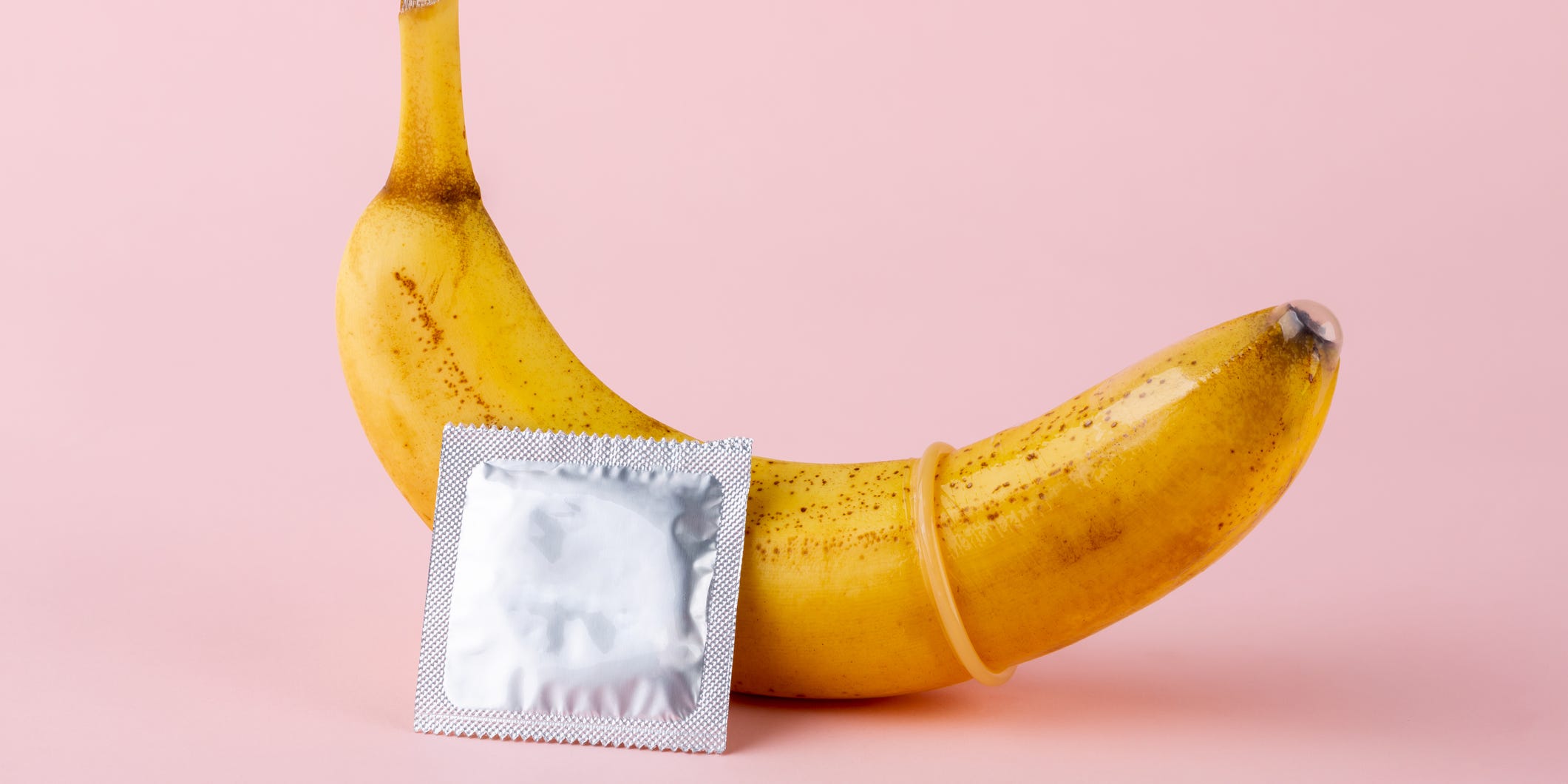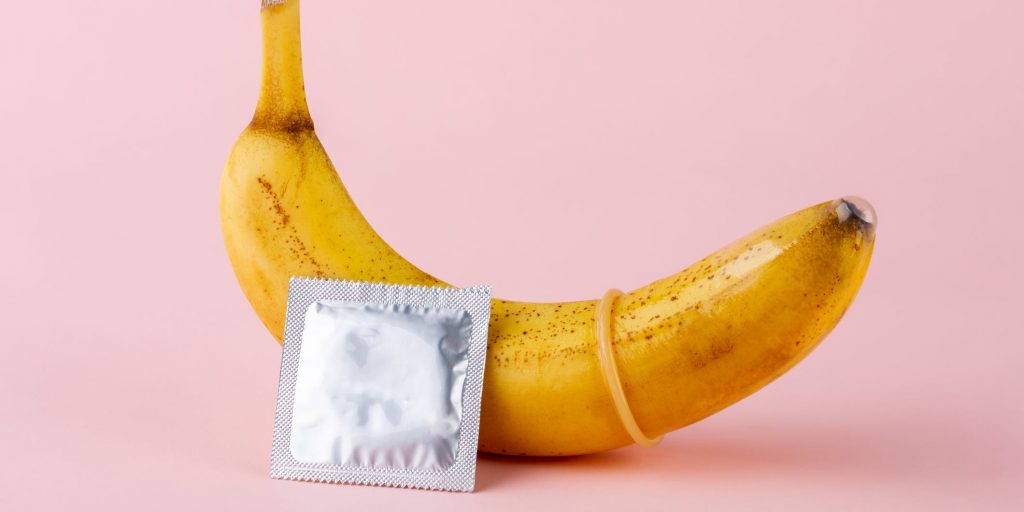
HUIZENG HU/Getty Images
- Before putting on a condom make sure you chose the right size and that it's not expired.
- Then, place the condom on the penis and roll it down, leaving a half-inch of space at the tip.
- To use condoms correctly, don't wear two at once or re-use the same condom.
- Visit Insider's Health Reference library for more advice.
When used properly, external condoms are about 98% effective at preventing pregnancy and reducing the transmission of sexually transmitted infections (STIs). However, since most people don't use condoms correctly, they are only about 85% effective in reality.
Here is how to put on a condom in seven steps:
1. Choose the right size
The first step to putting on a condom is choosing the right size so it doesn't slip off during intercourse.
"If the condom doesn't fit correctly, it may be less effective and less comfortable," says Aaron C. Lentz, MD, FACS, director of Duke Urology Men's Health Center and associate professor of surgery at the Duke University Division of Urologic Surgery.
Condoms come in different sizes like snug, standard, large, and extra large. You'll know if it is the right size when it's a snug fit, but not so tight that it feels uncomfortable. If a condom previously doesn't reach the base of the penis, you'll need to find a bigger size.
2. Check the expiration date
Next, you'll want to make sure the condom isn't expired. You can usually find the expiration date on the package.
An expired condom will start to break down and become significantly less effective at preventing STIs and pregnancy.
Most condoms have a shelf life of three to five years, given that they're stored properly in a cool, dry place and aren't exposed to direct sunlight or high humidity.
3. Remove the condom from the wrapper
Once you've found the right size and determined the condom isn't expired, you'll want to lightly press on the wrapper to feel for an air bubble. This means the packaging is intact and has not been torn or punctured.
When opening the wrapper, don't use your teeth or scissors to avoid damaging the condom. Then, take it out gently so you don't tear the condom with your fingernails.
4. Place on the head of the penis
After removing the condom, place it on the head of the penis.
Make sure the penis is erect when putting on the condom otherwise, it's more difficult to put on and more likely to slip off, says Stanton Honig, MD, director of the Male Urology Program Yale Medicine.
Be sure to pinch the tip which leaves a half-inch space for the semen after ejaculation.
5. Unroll it down the penis
Then, unroll the condom down the shaft of the penis to the base. Keep one hand holding the tip while you do so to pinch the air out of the condom. This is important because the condom may burst if air is trapped inside.
6. After sex, hold the base and pull out
After you ejaculate, grab the base of the condom while the penis is still hard before pulling out to ensure it stays on. Otherwise, it may slip off, causing semen to spill out, which places your partner at risk for pregnancy and STIs.
7. Dispose of the condom
When you take the condom off the penis, do so far enough away from your partner so you don't accidentally spill semen on them.
Then, wrap the condom in tissue for sanitary purposes before throwing it in the trash bin.
Breakout box: How to use a condom
Beyond properly putting on the condom, there are a few tips you should follow for safe and effective condom use.
|
DOs: |
DON'Ts: |
|
Do store condoms in a cool, dark, and dry place. Excessive heat and moisture can damage condoms and make them less effective. |
Do not use more than one condom at the same time. The friction between the condoms increases the likelihood of condom breakage. |
|
Do use a new condom every time you have sex. Condoms are single-use and should never be washed or reused in any way. |
Do not resume intercourse if you feel the condom break. Studies show that the likelihood of condom breakage is about 0.6% to 15%. Put on a new condom before resuming intercourse. |
|
Do use water-based lubricants. Oil-based lubricants make latex condoms more likely to break. |
Do not use the same condom when you switch from anal to vaginal sex. Wear a new condom to avoid introducing bacteria to the vagina. |
"We advise users to have several condoms available in case a condom is torn, put on incorrectly, falls off, or repeated intercourse is desired," says Lentz.
Insider's takeaway
When used correctly, condoms are 98% effective at preventing pregnancy and the transmission of STIs. However, in practice, condoms are only 85% effective as people don't wear or use them properly.
It's important to wear a condom properly in order to reduce the risk of condom breakage or slippage. To be safe, always have more than one condom on hand in case the one you're using breaks, you put it on inside out, or it accidentally slips off.
